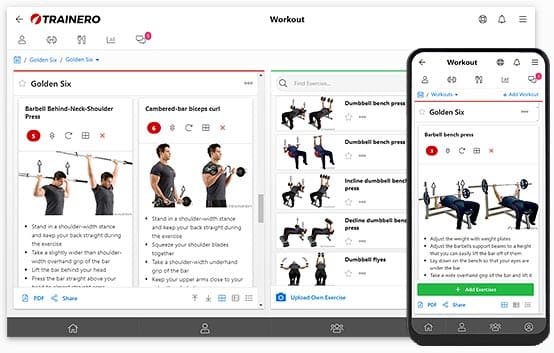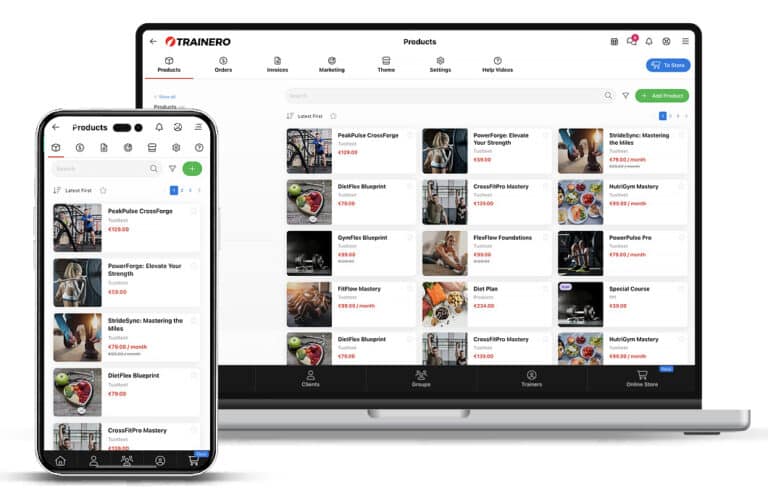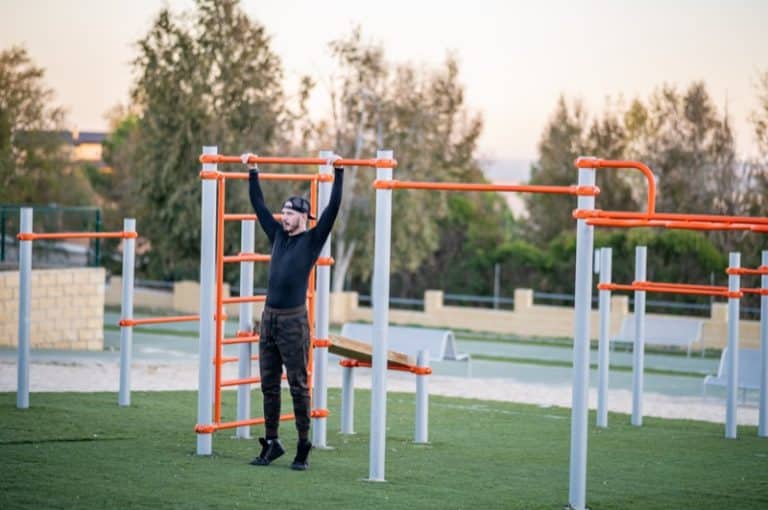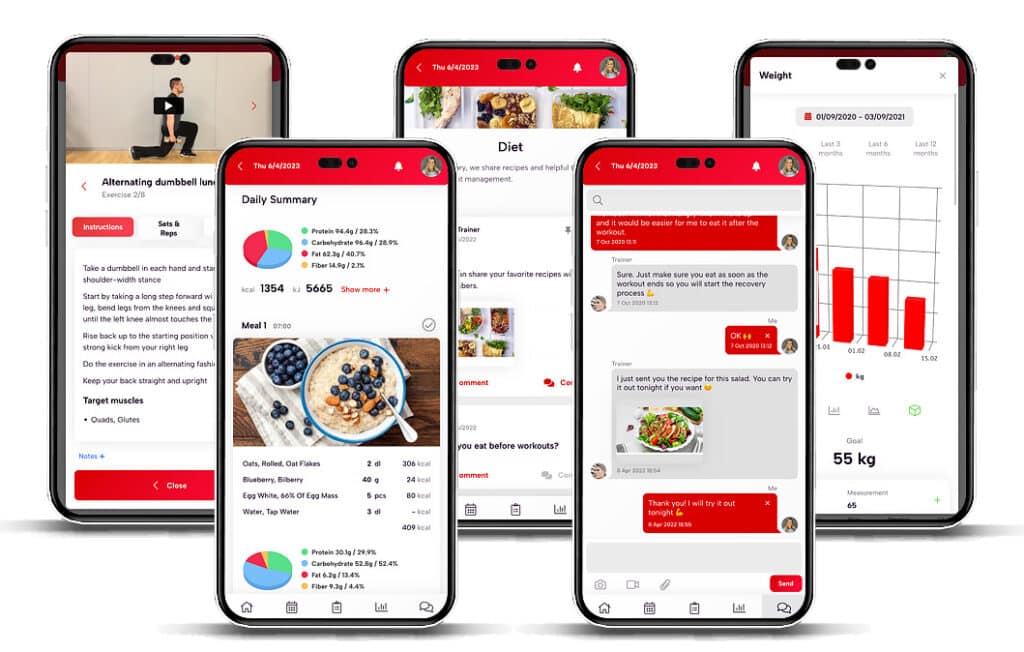Personal Training vs. Small Group Training: Which Coaching Model Works Best for You?
As a fitness coach, deciding whether to focus on one-on-one personal training or group fitness classes can shape the direction of your business. Both models offer unique benefits and challenges, and the right fit depends on your coaching style and the needs of your target audience. In this article, we’ll break down the key differences between personal training and group sessions, explore the pros and cons of each, and help you determine which approach aligns best with your coaching goals.
What are the Key Differences Between Personal Training and Small Group Training?
Understanding Personal Training Models
Personal training offers an individualized approach to fitness, where a personal trainer works one-on-one with a client to create a customized workout plan tailored to their specific needs and goals. Each personal training session is designed to focus on the client’s unique fitness levels, preferences, and capabilities, ensuring personalized attention throughout the workout. This individualized attention allows the trainer to monitor form and technique closely, making necessary adjustments to maximize effectiveness and minimize the risk of injury. Personal trainers often specialize in particular areas of fitness, such as weight loss or strength conditioning, offering clients a targeted approach that can lead to superior results.
Benefits of Small Group Training
On the other hand, small group training typically consists of 2-4 clients working out together under the guidance of a coach. This model fosters a sense of community and camaraderie among participants, which can enhance motivation and accountability. Small group personal training allows clients to benefit from group dynamics, where encouragement and support from peers can lead to increased effort and commitment. Additionally, small group classes can be more cost-effective compared to one-on-one personal training sessions, making fitness services accessible to a broader audience. The atmosphere of a group class often leads to a more enjoyable workout experience, as clients share the journey with others who are on similar paths toward improvement.
Which Model is More Effective for Client Results?
When it comes to effectiveness, the best model can vary based on individual client goals, preferences, and fitness levels. Personal training is ideal for clients seeking focused attention, specialized programming, and a highly individualized approach. It offers the opportunity for detailed feedback and tailored adjustments to workout plans, thus enhancing progress tracking and accountability. Conversely, small group training can yield excellent results for clients who thrive in social settings and enjoy the motivation that comes from exercising alongside others. The combination of personalized coaching and the energy of a group can create a dynamic workout environment that encourages participants to push their limits and achieve their desired outcomes.
How Does Personal Training Personalize Workouts for Clients?
Tailoring Sessions to Individual Needs
One of the primary advantages of personal training is the ability to tailor sessions specifically to individual needs. A personal trainer will assess a client’s current fitness level, health history, and personal goals to develop a customized workout plan that addresses unique requirements. This individualized focus allows trainers to modify exercises and workout intensity, ensuring that each session is both challenging and achievable. The trainer can also incorporate specific conditioning techniques to enhance performance in areas where the client may need additional support, thereby ensuring a comprehensive approach to fitness.
One-on-One Accountability with a Personal Trainer
Accountability is a significant factor in achieving fitness goals, and personal training provides an undivided level of attention that fosters this accountability. With a personal trainer, clients receive consistent motivation and encouragement during each session, which can lead to higher retention rates and sustained commitment. The trainer serves as a source of support, helping clients navigate through challenges and stay dedicated to their workout plans. This one-on-one relationship often results in a deeper understanding of the client’s needs and preferences, further enhancing the effectiveness of the training program.
Assessing Progress in Personal Training
Another crucial aspect of personal training is the ability to assess progress continuously. Personal trainers regularly evaluate their clients’ performance, making adjustments to workout plans as needed to ensure continued improvement. By tracking metrics such as strength gains, weight loss, and overall fitness levels, trainers can provide valuable feedback that keeps clients motivated and focused on their goals. This ongoing assessment not only reinforces the coach-client relationship but also ensures that clients remain engaged and challenged throughout their fitness journey.
What are the Advantages of Small Group Personal Training?
Building Community and Motivation in Small Groups
Small group personal training has distinct advantages, particularly in fostering a sense of community among participants. The social interactions that occur during group workouts can enhance motivation, as clients encourage one another and share their successes. This community aspect creates a supportive environment that can lead to improved client retention, as individuals feel more connected and invested in their fitness journeys. The group dynamic can also introduce friendly competition, which may enhance individual performance and drive clients to reach new heights in their fitness endeavors.
Cost-Effectiveness of Group Personal Training
From a business perspective, small group training offers a cost-effective solution for both trainers and clients. Clients can benefit from reduced rates compared to traditional personal training sessions while still receiving expert guidance and personalized attention within a group setting. For trainers, this model allows them to leverage their time and expertise by working with multiple clients simultaneously, increasing revenue potential without sacrificing the quality of training services offered. This scalability makes small group training an appealing option for many fitness professionals looking to expand their reach.
How Small Groups Enhance Social Interaction
Social interaction is a fundamental aspect of human behavior, and small group training taps into this by creating opportunities for clients to connect with others who share similar fitness goals. In a small group setting, participants often build friendships, share experiences, and celebrate each other’s progress, which can enhance the overall workout experience. This social aspect can also be particularly beneficial for clients who may feel intimidated or overwhelmed in larger gym environments, as the smaller group size allows for a more intimate and supportive atmosphere.
Which Coaching Model is Best for Your Fitness Business?
Assessing Your Niche: Personal Trainer vs. Small Group Coach
When determining which coaching model is best for your fitness business, it is essential to assess your niche and the demographics of your target audience. Personal trainers may find success by specializing in specific areas of fitness, such as rehabilitation, sports performance, or weight management. Conversely, those drawn to the dynamics of group classes may prefer the small group coaching model, which allows for more diverse client interactions. Understanding your strengths as a coach and the preferences of your potential clients will guide you in making the best choice for your business model.
Market Your Expertise Effectively as a Trainer
Regardless of the model chosen, effective marketing plays a crucial role in attracting clients to your fitness business. Highlighting your unique qualifications, training services, and success stories can help differentiate you from other personal trainers or small group coaches in the market. Utilizing social media, creating engaging content, and offering free introductory classes are just a few strategies that can enhance your visibility and draw clients to your fitness offerings. The key is to present a clear value proposition that resonates with your target audience.
Revenue Potential in Different Business Models
Finally, it is important to consider the revenue potential associated with each coaching model. Personal training can yield higher rates per session due to its individualized nature, often leading to increased earnings for trainers. However, small group training offers the advantage of serving multiple clients at once, which can lead to a more stable income stream over time. Evaluating the financial implications of each model will help you make an informed decision that aligns with your professional goals and financial expectations.
Can Online Coaching Integrate with Personal and Small Group Training?
Benefits of Online Coaching for Personal Trainers
As the fitness industry evolves, online coaching has emerged as a valuable tool for personal trainers and small group coaches alike. Online personal training allows trainers to reach clients beyond geographical limitations, offering workout plans and coaching services to a wider audience. This flexibility can enhance client engagement, as trainers can utilize various digital platforms to provide tailored guidance, motivation, and accountability. Additionally, online coaching can complement in-person training, providing clients with resources and support outside of their scheduled training sessions.
How to Run Effective Small Group Training Online
Running effective small group training online requires careful planning and execution. Trainers must ensure that technology is utilized to facilitate seamless communication and engagement among participants. Utilizing video conferencing tools, trainers can conduct virtual classes that maintain the benefits of small group training, such as community and motivation. It is also crucial to create structured workout plans that can be easily followed in an online format, ensuring that clients receive personalized attention even in a virtual setting.
Challenges and Solutions in Virtual Training Sessions
While online training offers numerous benefits, it is not without challenges. Trainers must navigate issues such as maintaining client motivation, addressing technical difficulties, and ensuring proper form and technique during exercises. To overcome these challenges, trainers can implement strategies such as offering regular feedback through video analysis, encouraging clients to share their experiences in group chats, and providing additional resources to enhance the online training experience. By proactively addressing these challenges, trainers can create a successful online coaching model that effectively complements their personal and small group training services.
Whichever Model You Choose, Trainero Has You Covered
Whether you decide to focus on personal training or small group sessions, Trainero provides the tools you need to deliver results efficiently and professionally. With Trainero, you can easily create customized workout plans, track each client’s progress in real time, and maintain seamless communication through the built-in messaging tools. The platform is designed to adapt to your coaching style—whether you’re guiding one client at a time or leading a group. Trainero helps you stay organized, save time, and provide a consistent, high-quality training experience across the board.

Unlock your fitness potential with Trainero! Get a 14-day free trial and access personalized workout plans, expert coaching, and progress tracking—all in one app. No commitments, just results. Start your free trial today and take your fitness journey to the next level!











